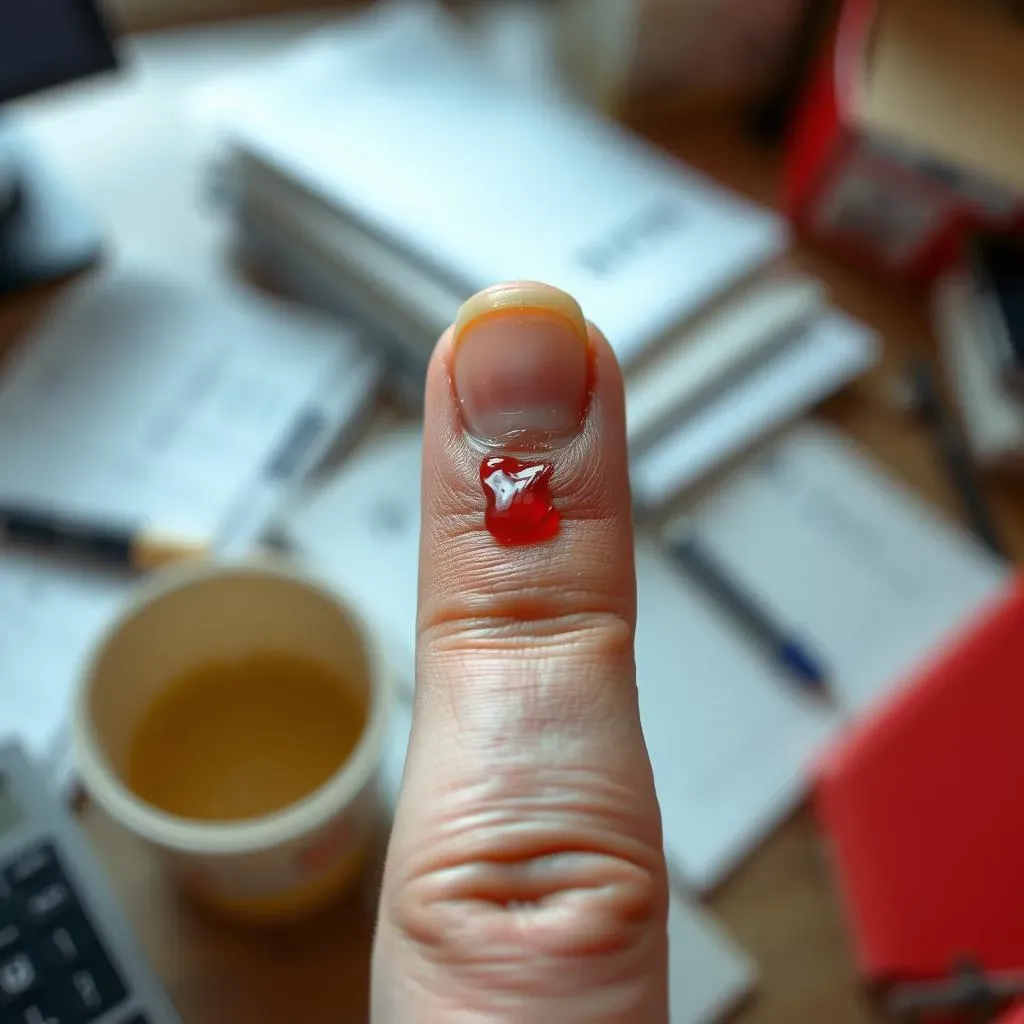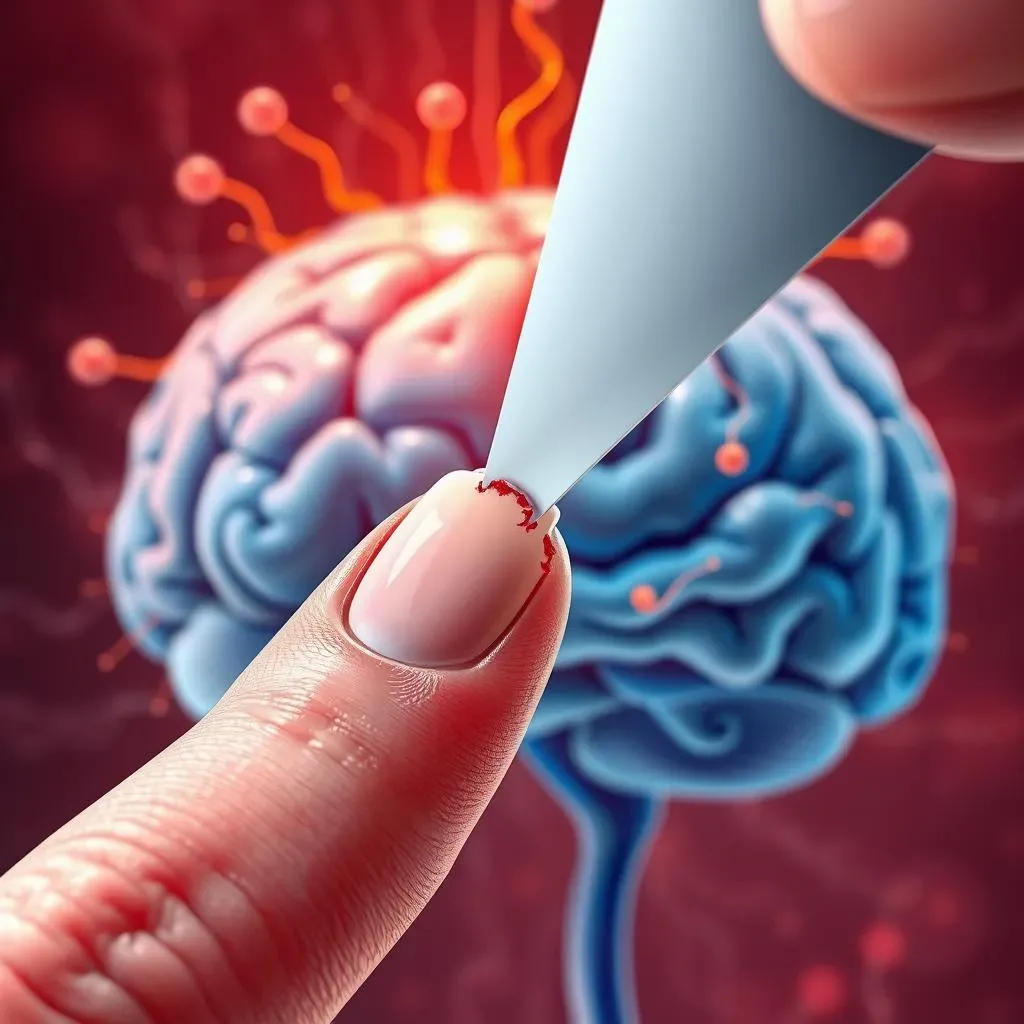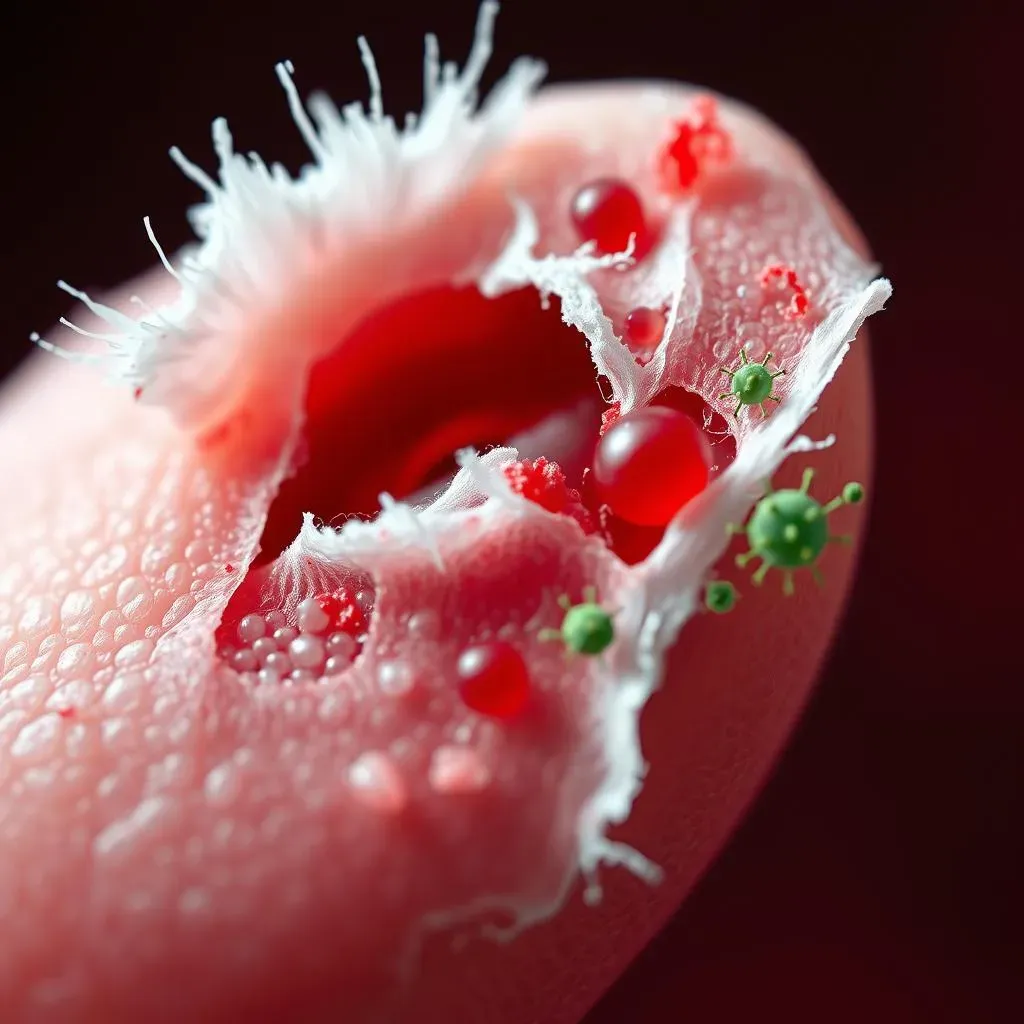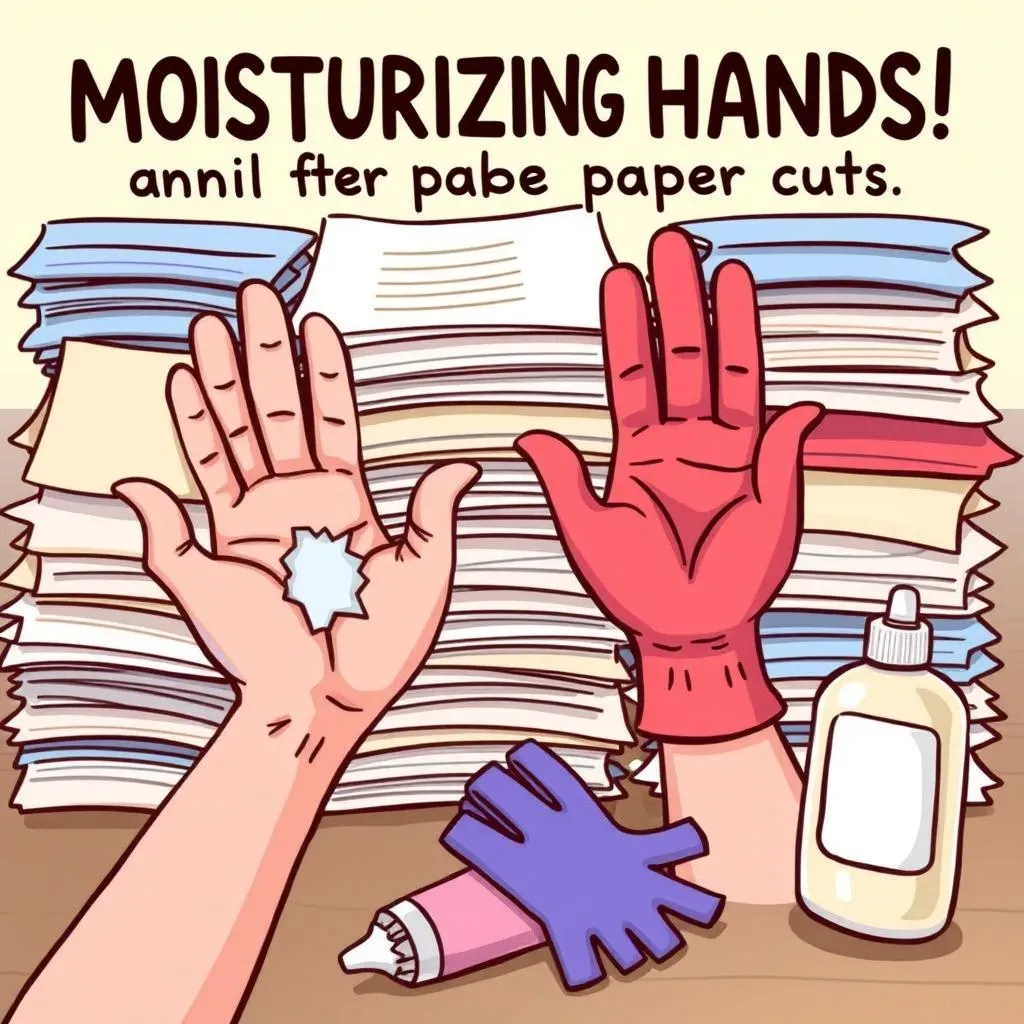Table of Contents
Have you ever experienced that sharp, stinging pain from a seemingly insignificant cut? We've all been there – the frustrating, often disproportionately painful paper cut. But are paper cuts real? Do they truly deserve the reputation for inflicting such intense discomfort compared to other minor injuries? This article dives headfirst into the surprisingly complex world of paper cuts, exploring the science behind their intense pain and revealing why even the smallest slice can pack a mighty punch. We'll uncover the truth about why these tiny wounds hurt so much, examining the unique properties of paper and the extraordinary sensitivity of our fingertips. You'll learn about potential complications and how to treat these seemingly minor injuries effectively. Finally, we'll equip you with practical strategies to prevent those dreaded paper cuts, so you can go about your day without the unexpected sting. So, let's unravel the mystery – are paper cuts real? Let's find out!
The Painful Truth: Are Paper Cuts Real?
The Painful Truth: Are Paper Cuts Real?
The Ubiquitous Paper Cut: A Shared Experience
Let's be honest, we've all been there. That fleeting moment of carelessness, a quick swipe of the hand across a stack of papers, and suddenly – a searing pain. A tiny, almost invisible wound, yet the agony is undeniable. It's a universal experience, a testament to the fact that even the most mundane objects can inflict surprising discomfort. The burning sensation, the throbbing pulse, the disproportionate reaction to such a minor injury – it’s all real, and it's far more common than you might think. But the question remains: why?
The initial disbelief, a sort of mental recalibration, is common. We often dismiss it as insignificant, only to be met with an overwhelming sting. This disparity between the size of the wound and the intensity of the pain is a key element in understanding the phenomenon. It’s not simply a matter of a small cut; it's about the interaction between the sharp edges of the paper, the delicate skin of our fingertips, and the complex network of nerves beneath. To learn more about paper cutting tools, check out our guide on essential paper cutting tools.
Paper Type | Cut Severity | Pain Level (Subjective) |
|---|---|---|
Thin Printer Paper | Shallow | High |
Thick Cardboard | Deeper | Potentially Higher |
Beyond the Anecdotal: Scientific Evidence
While the anecdotal evidence is overwhelming (everyone's experienced the pain!), the scientific community has also taken an interest. Research has shown that the jagged, microscopic edges of paper create a wound that's not a clean cut, but more like a series of tiny tears. This irregular tearing damages nerve endings in a way that a smooth, sharp blade might not. The resulting pain is amplified by the high concentration of nerve endings in the fingertips. These areas are exceptionally sensitive because they're crucial for fine motor skills and tactile exploration – our fingers are our primary tools for interacting with the world. Learn more about the art of paper cutting art.
Furthermore, the shallow nature of many paper cuts means that bleeding is often minimal. This lack of clotting can leave exposed nerve endings vulnerable for longer periods, prolonging the sensation of pain. The constant movement and use of our hands and fingers only exacerbates the problem, causing the wound to reopen repeatedly, extending the suffering. It's a perfect storm of factors that create a disproportionately painful experience. So, yes, the pain is real, and the science backs it up. It's not just in your head; it's in your nerves!
- Jagged edges of paper
- High nerve density in fingertips
- Minimal bleeding, prolonged nerve exposure
Why Paper Cuts Hurt So Much: The Science Behind the Sting
Why Paper Cuts Hurt So Much: The Science Behind the Sting
So, we've established that paper cuts are real and surprisingly painful. But *why*? It's not just about the cut itself; it's a complex interplay of factors. Think of it like this: paper isn't a smooth, clean-cutting blade. Under magnification, the edge of a piece of paper is incredibly rough and jagged, more like a tiny saw than a knife. This means the cut isn't a precise incision; it's a series of micro-tears that damage nerve endings in a particularly nasty way.
This is where the location of the cut comes into play. Our fingertips are packed with nerve endings – far more densely concentrated than other parts of the body. This sensitivity is essential for our fine motor skills and our ability to perceive textures and temperature. It's what lets us type on a keyboard, delicately pick up a crumb, or feel the difference between silk and sandpaper. But it also means that even a tiny tear in this highly sensitive area will send a strong pain signal to the brain. For more intricate cutting projects, check out our guide on paper cutting patterns.
- Microscopic jagged edges create micro-tears.
- High concentration of nerve endings in fingertips.
- Shallow cuts mean prolonged nerve exposure.
Another critical factor is the minimal bleeding associated with many paper cuts. Unlike deeper cuts that bleed readily and form clots, shallow paper cuts often don't bleed much. This means the damaged nerve endings remain exposed and vulnerable for longer, prolonging the pain. It's like a constant, low-level irritation that just won't quit. And, to make matters worse, the constant use of our hands and fingers means that the wound is repeatedly subjected to friction and movement, reopening the micro-tears and restarting the pain cycle. It's a vicious cycle of microscopic damage and repeated irritation. For a broader understanding of paper cutting, explore our paper cutting techniques guide.
So, the next time you suffer a paper cut, remember it's not just a simple cut. It's a complex interaction between the paper's rough edges, the high density of nerve endings in your fingertips, and the shallow nature of the wound. This combination leads to a disproportionately intense pain response – a perfect storm of irritation, damage, and repeated trauma. It's a testament to the incredible sensitivity of our fingertips and the remarkable complexity of the human body.
Factor | Effect on Pain |
|---|---|
Jagged Paper Edges | Creates micro-tears, damaging nerve endings |
High Nerve Density | Amplifies pain signals to the brain |
Minimal Bleeding | Prolonged nerve exposure, extended pain |
Beyond the Pain: Are Paper Cuts Dangerous? Complications and Treatment
Beyond the Pain: Are Paper Cuts Dangerous? Complications and Treatment
Minor Injuries, Major Concerns?
While most paper cuts are minor annoyances, they aren't entirely without risk. The biggest concern is infection. Because our hands are constantly interacting with the world, paper cuts can easily become contaminated with bacteria. Signs of infection include increased redness, swelling, persistent pain, pus, or warmth around the cut. If you notice any of these, it's crucial to seek medical attention. Ignoring a seemingly minor infection can lead to more serious problems. Proper cleaning and care are vital. For a deeper dive into paper cutting safety, check out our guide on paper cutter safety.
Beyond infection, certain individuals are at higher risk for complications. People with diabetes, compromised immune systems, or nerve damage (neuropathy) may experience slower healing times or increased susceptibility to infection. These individuals should take extra precautions to keep their paper cuts clean and monitor them closely for any signs of trouble. Even a seemingly small paper cut could become a significant issue for those with pre-existing conditions. Knowing your risk factors is key to ensuring proper care and preventing problems.
- Increased Redness
- Swelling
- Persistent Pain
- Pus or Fluid
- Warmth to the Touch
Treating and Preventing Paper Cut Woes
Treating a paper cut is usually straightforward. The first step is always thorough cleaning. Wash your hands thoroughly with soap and water, gently cleaning the area around the cut. Avoid scrubbing, as this can further irritate the wound. Applying a thin layer of antibiotic ointment can help prevent infection. A bandage can protect the cut and prevent further irritation, especially if it's located in a frequently used area. Change the bandage daily, or more often if it gets wet or dirty. For creative paper cutting projects, explore our paper cutting project ideas.
Preventing paper cuts involves a combination of common sense and careful habits. Keep your hands moisturized to maintain skin strength and resilience. Handle paper carefully and slowly, avoiding quick or forceful movements. Use letter openers for envelopes and consider wearing gloves when dealing with large quantities of paper. Small changes in your routine can dramatically reduce your risk of experiencing the pain of a paper cut. Remember, prevention is always better than cure, especially when it comes to these surprisingly painful little wounds!
Treatment Step | Description |
|---|---|
Clean the wound | Wash thoroughly with soap and water |
Apply antibiotic ointment | Helps prevent infection |
Cover with a bandage | Protects the wound and prevents irritation |
Preventing Paper Cuts: Protecting Your Fingers from the Tiny Terror
Preventing Paper Cuts: Protecting Your Fingers from the Tiny Terror
Moisturize and Protect: A Simple Defense
Let's face it: dry, brittle skin is far more vulnerable to paper cuts. Think of your skin as a shield – a strong, supple barrier protecting your delicate nerves. When your skin is dry and cracked, that shield weakens, making it easier for the jagged edges of paper to penetrate and cause damage. Regular moisturizing is your first line of defense. Apply a good hand cream or lotion several times a day, paying special attention to your fingertips. This simple act strengthens your skin's natural defenses, making it more resilient to the tiny terrors lurking in every stack of papers. For a more comprehensive guide on materials, explore our guide to choosing the right paper for your projects.
Beyond moisturizing, consider wearing gloves when handling large quantities of paper, especially if you're working with rough or stiff materials. Gloves provide a physical barrier between your skin and the paper, dramatically reducing the risk of cuts. This is especially important for tasks like filing, shredding, or handling stacks of documents. Think of gloves as an extra layer of protection, reinforcing your skin's natural barrier and preventing those painful encounters. For more on creative paper cutting, check out our ideas on paper cutting decorations.
- Use a good hand cream or lotion.
- Wear gloves when handling large amounts of paper.
- Consider using tools like letter openers.
Mindful Handling: Slow and Steady Wins the Race
The speed at which you handle paper plays a surprisingly significant role in preventing cuts. Think about it: a quick, sweeping motion across a stack of papers dramatically increases your chances of a paper cut. In contrast, slow, deliberate movements allow you to feel the paper's edge and avoid accidental contact. This mindful approach turns a potentially hazardous activity into a safe one. It’s about taking your time and approaching the task with awareness. It's a simple shift in mindset that can make a big difference. For beginners, our beginner tutorials are a great resource.
Similarly, using appropriate tools can significantly reduce your risk. For opening envelopes, a letter opener is a game-changer. It eliminates the need to use your fingers, removing the risk of accidental cuts. For larger tasks, consider using a paper cutter instead of manually tearing or cutting paper. Investing in the right tools not only makes the job easier but significantly improves safety. Remember, a little forethought can go a long way in protecting your fingers from the sharp edges of paper. And while you’re at it, why not try some paper cutting cards?
Prevention Method | Effectiveness |
|---|---|
Slow, deliberate movements | High |
Using letter openers | High |
Using a paper cutter | Very High |